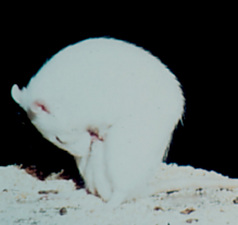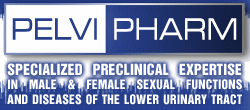Ex copula test
Objectives
Sexual motivation can be inferred from measures of sexual arousal or copulatory measures. Sexual arousal can be measured by examination and quantification of the penile function. In male rats, penile function can be studied in isolation or in response to different types of sexually arousing stimuli (Meisel & Sachs, 1994; Sachs et al., 1994). Tests in isolation, also named ex copula test, allow the assessment of the effects of different experimental treatments (drugs administration, brain lesions, nerve deafferentation...) on penile erection. This test has the advantage to measure spontaneous erection outside the context of copulation and without external effective stimulus as in the supine test (Cf. penile reflex test). Dopamine agonists, such as apomorphine, and oxytocin are among the most effective and commonly used drugs to promote erection in this context (Heaton, 2000; Argiolas and Melis, 1995; Hull, 1995).
Summarized methodology
The ex copula test is performed in an observation cage (42 x 20.5 x 18.5 cm plastic cage, with wood chip bedding on the floor) where a mirror is placed behind the cage to facilitate observation. The male is introduced in the cage and penile erections are visually identified and manually scored by a trained blinded observer. Penile erections are scored when the male stands up on the extremity of its hindlimbs, bends its head toward the genital region, with the penis emerged from its sheath, and displays hip movements (Sachs et al., 1994). Visual observation in the ex copula test can be associated with continuous intracavernous pressure measurement using telemetric device.
Endpoints
- Latency for the first penile erection to occur.
- Number of penile erections occurring during the total period of observation.
 |
| Figure1: Male rat displaying an erection during the ex copula test. |






















 Download this page in PDF
Download this page in PDF